Amon & Christina – Stock Market Investing for Financial Independence & Retiring Early
$199.00 Original price was: $199.00.$47.50Current price is: $47.50.
This course consists of more than four hours of video instruction, more than thirty resources, and a 19-page downloadable pdf investment plan for you to fill out and create based on the information you learn from the course.
Amon & Christina – Stock Market Investing for Financial Independence & Retiring Early
This Course Includes:
4+ hours of on-demand video
Absolutely NO boring PowerPoints. Instead, we talk to you face-to-face (like our YouTube videos). Keeping you engaged all 21 modules (4.5 hours).
Your own investment plan
In this course, we share our specific holdings in our investment accounts and we include a 19-page pdf investment plan for you to download and fill out, so that you can create your own individual investment plan, too!
30+ investing resource
Our resources include homework assignments, summary notes, and a list of additional resources that include additional investing tips that you can print and take with you anywhere
What You’ll Learn:
This course consists of more than four hours of video instruction, more than thirty resources, and a 19-page downloadable pdf investment plan for you to fill out and create based on the information you learn from the course.
The video instruction is broken into twenty-one modules. Each module focuses on different investing topics, with the modules presented in sequential order.
We begin the course by discussing the steps you should take before you begin investing. We also discuss how to calculate your FIRE number and how that number relates to your overall investment portfolio and your withdrawal strategy during retirement. We then share stock market history information, historical market perspectives, and the mentality behind investing.
We go over the different types of investment accounts that may be available to you (including tax-advantaged and non-tax advantaged accounts) and we discuss the various types of fees associated with different types of investments. We discuss the key characteristics to look for when picking a brokerage company and we walk you through how to open a brokerage account, how to fund the account, and how to set the account up for automatic investments.
We discuss how to structure your order of investing and the different types of investments that you can add to your portfolio (including index funds, ETFs, REITs, individual stocks, and bonds). We discuss the key factors you need to consider when deciding on your asset allocation. We walk you through how to research different types of investments and what to look for when you’re investing in different assets, such as index funds, ETFs, REITs, and individual stocks.
We discuss whether you should lump sum your money into your investments or whether you should dollar cost averaging. We also discuss how to rebalance your portfolio, common investing mistakes to avoid, and how to invest during a recession and bear markets.
At the end of the course, we put everything together so that you can take action and invest.
“When you invest, you’re buying a day you don’t have to work.”
– Aya Laraya
Meet Your Instructors
Hello, We’re Amon & Christina (Your Instructors)
We’re former federal government employees that focused on saving, making, and investing money so that we could grow enough wealth in our investments to never have to work again.
And, guess what? We did it! At the age of 39, we reached financial independence, quit our jobs, and . . . we retired!
If you’re interested in learning how to invest in the stock market on the road to financial independence and retiring early (i.e., FIRE) – this course is for you!
“Reaching FIRE has allowed us to spend more time with each other and with our daughters. We get to live every day to the fullest!”
– Amon & Christina Browning
Frequently Asked Questions
Who is this course for?
This course is designed for various different investors, including:
- People that are new to investing;
- People who have dabbled in and out of investing, but want to become financially literate to become a long-term investor;
- People who may have been investing for quite some time, but haven’t gotten their intended results or haven’t understood the consequences of their investment strategies; and
- people who have been investing with a financial advisor and are looking to gain financial literacy to begin investing on their own.
Basically, if you’re interested in financial independence and you want to learn more about investing in the United States stock market in order to reach financial independence – this class is for you!
How long does it take to complete the course?
The video instruction is broken up into twenty-one modules, with each module being broken up into smaller sizes that are easy to digest and stay engaged. In total, the video instruction is approximately 4.5 hours. However, the course also contains homework assignments, summary notes, additional resources, and your own personalized investment plan to create. With that in mind, the timeframe and the pace at which you complete the course is completely up to you!
How long will I have access to the course?
After enrolling in the course, you have unlimited access to the course for as long as you like. You should feel free to watch each module back-to-back or take your time and go through each module at your own relaxed pace. More importantly, once you complete the course, you have unlimited access – so you can come back and watch the videos whenever you want!
What if I’m a non-U.S. citizen?
While certain portions of the course are applicable to everyone, some content refers specifically to tools, options, and investments available only to people who can invest in the United States stock market. If you are a non-U.S. citizen, certain tools, options, and investments discussed in the course may not be available to you. Accordingly, if you are a non-U.S. citizen and looking to invest in non-U.S. markets, this course is not for you.
What if I’m a U.S. citizen but live outside of the United States?
There are certain requirements that you must meet if you intend to invest in the U.S. stock market while living outside of the United States – even if you are a U.S. citizen. Because some of the content of this course refers specifically to certain tools, options, and investments available only to people who can invest in the United States stock market, please consider your unique circumstances (and whether living abroad will allow you to invest in U.S. markets) before signing up for this course.please reach out to us to get your questions answered before you decide to sign up for the class.
Get immediately download Amon & Christina – Stock Market Investing for Financial Independence & Retiring Early
Course Curriculum
Module 1 – Introduction & Overview
Welcome! (4:16)
Download your Stock Market Investing Plan for FIRE and start your course!
Module 1 Assignment: Section I of Your Investment Plan
Module 2 – Steps to Take Before You Begin Investing
Establishing an Emergency Fund (3:25)
Pay off High Interest Debt (2:45)
Module 2: Summary Notes
Module 3 – Starting With a Goal & Achieving FIRE
Calculating Your FIRE Number (4:14)
The Trinity Study (6:57)
Module 3: Summary Notes
Module 3: Assignment #1 (Start With a Goal)
Module 4 – Stock Market History (Good Investors Know their History)
How it All Began (3:05)
Crash of 1929 (Black Tuesday) (1:24)
Crash of 1973-74 (Oil Crisis Crash) (0:59)
Crash of 1987 (Black Monday) (1:15)
Crash of 2000 (Dot-com Bubble) (2:22)
Crash of 2008 (Great Recession) (1:16)
Crash of 2020 (Coronavirus Crash) (4:05)
Module 4: Summary Notes
Module 5 – Investing Mentality
Controlling Your Emotions (4:19)
How to Behave During a Crash (4:49)
Module 5 Summary Notes
Module 5: Assignment #1 (Investing Assessment)
Module 6 – Overview of Investment Accounts
Two Types of Accounts: Tax Advantage & Non-Tax Advantage (2:08)
Tax Advantaged Accounts – 401(k) (4:28)
Tax Advantaged Accounts – Solo 401(k) (2:13)
Tax Advantaged Accounts – 457 Plan (1:36)
Tax Advantaged Accounts – Traditional IRA (2:27)
Tax Advantaged Accounts – 403(b) (1:28)
Tax Advantaged Accounts – Roth IRA (2:35)
Tax Advantaged Accounts – Self-Directed IRA (1:40)
Tax Advantaged Accounts – Health Savings Account (HSA) (4:41)
Tax Advantaged Accounts – 529 (2:52)
Non-Tax Advantaged Accounts – Ordinary brokerage account (5:04)
Module 6: Summary Notes
Module 6: Additional Resources
Module 7 – Types of Investment Fees
Brokerage Fees (1:48)
Transaction Fees (0:54)
Expense Ratios (1:03)
Fronted-End Load Fees (1:13)
Back-End Load Fees (0:55)
Management Fees (0:51)
Annual Fees (0:40)
Impact of Fees (4:44)
Avoiding or Reducing Fees (Tip 1) (1:27)
Avoiding or Reducing Fees (Tip 2) (1:29)
Avoiding or Reducing Fees (Tip 3) (1:11)
Avoiding or Reducing Fees (Tip 4) (1:41)
Module 7: Summary Notes
Module 8 – Picking a Brokerage Company
Evaluating the Brokers Security (2:37)
Insurance – What to Look For? (1:17)
Consider the Brokerages Fraud Policies (0:47)
Checking for Fees (1:21)
Assessing Customer Service (1:14)
Platform Interface (Website and App) (1:03)
Types of Accounts Offered (1:23)
Customer Reviews (1:20)
Module 8: Summary Notes
Module 9 – Opening A Brokerage Account
Step-by-Step Instructions (4:54)
Module 9: Summary Notes
Module 10 – Funding Your Brokerage Account
Options for Funding Your Account (2:41)
Module 10: Summary Notes
Module 11 – Automate Investments
Automating – Benefit 1 (1:51)
Automating – Benefit 2 (2:19)
Automating – Benefit 3 (1:36)
Automating – Benefit 4 (2:24)
Setting Up Automated Investments (3:32)
Module 11: Summary Notes
Module 12 – Order of Investing
Why Order of Investing Matters (2:18)
Step 1 (2:08)
Step 2 (1:29)
Step 3 (1:29)
Step 4 (1:17)
Step 5 (1:49)
Step 6 (1:39)
Step 7 (1:16)
Bonus Step for Early Retirees (2:10)
Module: 12 Summary Notes
Module 12: Assignment #1 (Your Order of Investing)
Module 12: Additional Resources (How We Invested for FIRE)
Module 13 – Types of Investments
Actively Managed Mutual Funds (2:01)
Index Funds (1:08)
Deciding Between Mutual Funds & Index Funds (2:03)
Mutual Funds vs. Index Funds – Goals & Fees (2:08)
Mutual Funds vs. Index Funds – Comparing Performance (1:38)
Index Fund Preference (2:20)
Exchange Traded Funds (1:18)
Comparison – ETFs and Index Funds (1:27)
Why People Choose ETFs Over Index Funds – Reason #1 (1:00)
Why People Choose ETFs Over Index Funds – Reason #2 (1:09)
Why People Choose ETFs Over Index Funds – Reason #3 (1:07)
Why People Choose Index Funds Over ETFs – Reason #1 (2:42)
Why People Choose Index Funds Over ETFs – Reason #2 (0:57)
REITs (2:25)
Individual Stocks (3:21)
Bonds (2:25)
Module 13 Summary Notes
Module 14 – Asset Allocation & Optimal Returns
What Is Asset Allocation (1:46)
Asset Allocation and Time Horizon (1:22)
Aggressive vs Reckless Investing (1:41)
Role of Bonds (2:14)
Stock vs Bond Allocation (2:08)
Problem With the Rule of Thumb (1:35)
Our Thoughts When Developing Our Portfolio Allocation (1:41)
Asset Allocation and Revisiting the Trinity Study (3:04)
See Inside Our Portfolio – Stocks Bonds and Emergency Funds (2:21)
See Inside Our Portfolio – Creating Our Core Investment (1:23)
See Inside Our Portfolio – Supporting Our Core Investment With ETFs (2:28)
See Inside Our Portfolio – Supporting Our Core Investment with REITs (0:56)
See Inside Our Portfolio – Supporting Our Core Investment With Individual Stocks (1:35)
Module 14: Summary Notes
Module 14: Assignment #1 (Your Targeted Asset Allocation)
Module 14: Additional Resources
Module 15 – Researching Investments
Researching Investments in General (1:53)
Researching Index Funds (2:44)
Comparing Index Funds (2:19)
Researching and Comparing ETFs (1:50)
Researching and Comparing REITs (1:12)
Individual Stocks A Word of Warning (1:08)
Researching and Picking Stocks – Factor 1 (1:18)
Researching and Picking Stocks – Factor 2 (1:06)
Researching and Picking Stocks – Factor 3 (0:52)
Researching and Picking Stocks – Factor 4 (0:52)
Researching and Picking Stocks – Factor 5 (0:45)
Researching and Picking Stocks – Factor 6 (0:46)
Researching and Picking Stocks – Factor 7 (1:27)
Module 15: Summary Notes
Module 15: Assignment #1 (Your Investments)
Module 16 – Lump Sum Investing v. Dollar Cost Averaging
An Identified Lump Sum (2:03)
Vanguard Study and Results (1:55)
The Mindset Role (1:30)
Taking Into Account the Fear of Investing (1:35)
The Ultimate Question to Ask Yourself (0:56)
Module 16: Summary Notes
Module 16: Additional Resources
Module 17 – Rebalancing
Strategy of Rebalancing (1:56)
Sample Portfolio to Rebalance (1:20)
Rebalancing Strategy #1 (1:23)
Rebalancing to Reduce Risk (2:13)
Rebalancing to Increase Returns (1:32)
Rebalancing Strategy #2 (1:22)
Rebalancing vs. Timing the Market (1:55)
Rebalancing Frequency Option #1 (0:49)
Rebalancing Frequency Option #2 (1:38)
Module 17: Summary Notes
Module 17: Assignment #1 (Rebalancing Strategy)
Module 18 – Investing Mistakes to Avoid
Eight Mistakes – Your Guiding Light (1:17)
Mistake #1 (1:15)
Mistake #2 (1:58)
Mistake #3 (0:47)
Mistake 4# (1:38)
Mistake #5 (0:59)
Mistake #6 (2:01)
Mistake #7 (1:07)
Mistake #8 (1:34)
Module 18: Summary Notes
Module 18: Assignment #1 (Note to Self – Investment Mistakes to Avoid)
Module 19 – Dealing With Recessions and Bear Markets
Tip 1 (2:02)
Tip 2 (1:01)
Tip 3 (1:04)
Tip 4 (1:06)
Module 19: Summary Notes
Module 19: Assignment #1 (Your Plan for Dealing with Crashes)
Module 20 – Putting it All Together
Putting It All Together (2:26)
Module 20 Summary Notes
Module 21 – Continue Education
Continuing Education (1:54)
Module 21: Summary Notes
Module 21: Assignment #1 (Other Considerations)
Read more: https://archive.ph/4RYK7
Course Features
-
Lectures
0 -
Quizzes
0 -
Duration
50 hours -
Skill level
All levels -
Language
English -
Students
52 -
Assessments
Yes
Be the first to review “Amon & Christina – Stock Market Investing for Financial Independence & Retiring Early” Cancel reply
Related products
Business & Marketing
Rodney Walker – Grant Writing That Gets Funded Training Program (Deluxe)
Business & Marketing
Business & Marketing
Business & Marketing
Business & Marketing
Kevin Spacey – Paint By Numbers Marketing System – PBN: Insurance
Business & Marketing
Business & Marketing
Business & Marketing



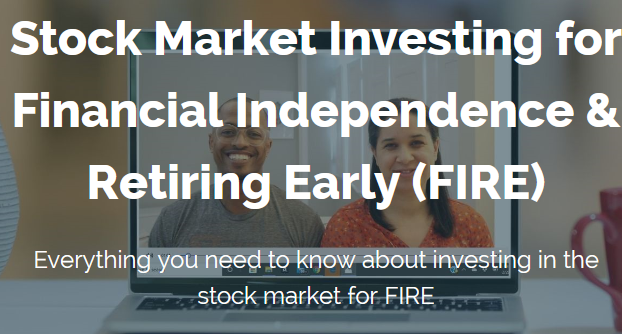
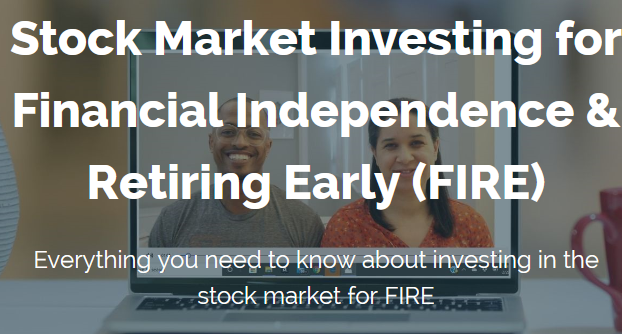
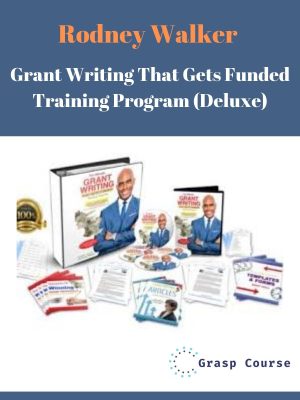

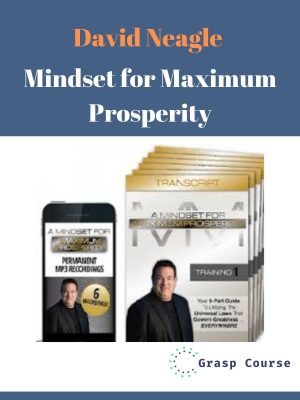

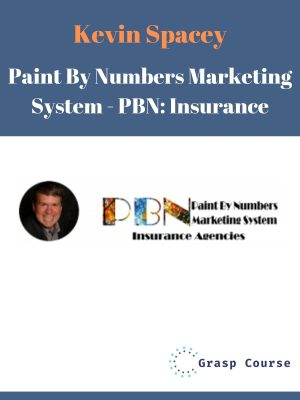
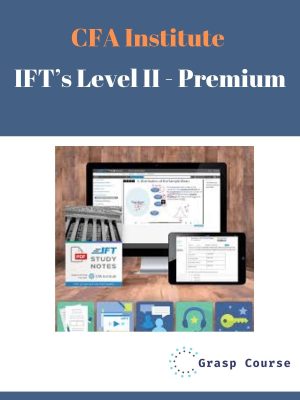


Reviews
There are no reviews yet.